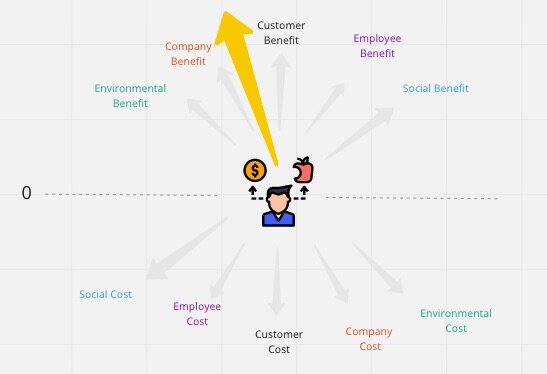Musical Scales
Having spent years playing in musical ensembles, I’ve recently considered the similarities between 'scaling' musical groups and other types of teams. For the listener (the customer), the value in scaling musical groups is in the increased variety of instruments and their associated interactions and dynamics. But what is the experience of scaling like for the musicians?
The most personally rewarding musical ensembles I've played in were small groups of 2-4 people, where the interaction with each other was constant and immediate. We would sit together in a configuration that allowed us all to see each other without anyone having their back to the audience. It was important that we could make eye contact with each other, breathe together, and take cues from one another. The notation on the page is only the framework to create music. The nuances within that framework and the interpretation of that framework are where the music lives. It was a joyful experience to anticipate each other's timing and intonation based on our history and immediate body language. We respected each other's abilities, and reveled in our mates' individual contributions to an overall musical experience. All of this took practice, time, and passion.
As a member of a symphony orchestra (50-70 people), the situation changed significantly. Once again we all played from the same score, had similar (but not identical) aural interactions, and our visual interactions were still limited by proximity to others. We took cues from other players in our section and from the conductor. The orchestra's seating arrangement involved 'sections' of like instruments arranged in a semi-circle around the conductor. If you were at the front of your section, you could take cues from people at the front of other sections. If you were at the back of your section, you took cues from the people in front of and beside you. The quality of the music produced was defined not only by the underlying score-- but the ability of the large group of musicians to be collectively in time, dynamically aligned, and in tune with that score. The conductor was responsible for interpreting the score emotionally and showing the orchestra the timing/dynamics necessary to express that emotion. A significant amount of time was spent keeping an eye on the conductor, especially when there were complex musical interactions. The conductor faced the orchestra, back to the audience, and was the unifying force behind the music.
I love watching and listening to people who are exceptional at their craft. The highlight of orchestral work for me was experiencing soloist performances against the backdrop of the rest of the orchestra. The soloist was the star of a moment, with the orchestra playing a supporting role. If we were in perfect unison (intonation, timing, dynamics) the resulting effect was magnificent.
While the powerful music created by orchestras can be divine, I’m still drawn to creating music in duets, trios, and quartets. Why? I can only surmise that for me, it’s about the symbiotic and continuous exchange with people I trust and admire. The arrangement of a symphony orchestra is strikingly similar to many traditional organizational structures. Can you see how and why? Do you see similarities to the way your department, division, or company functions? What could you and those around you do differently to shift the experience closer to that of a quartet? Let me know - @snowdolphin














